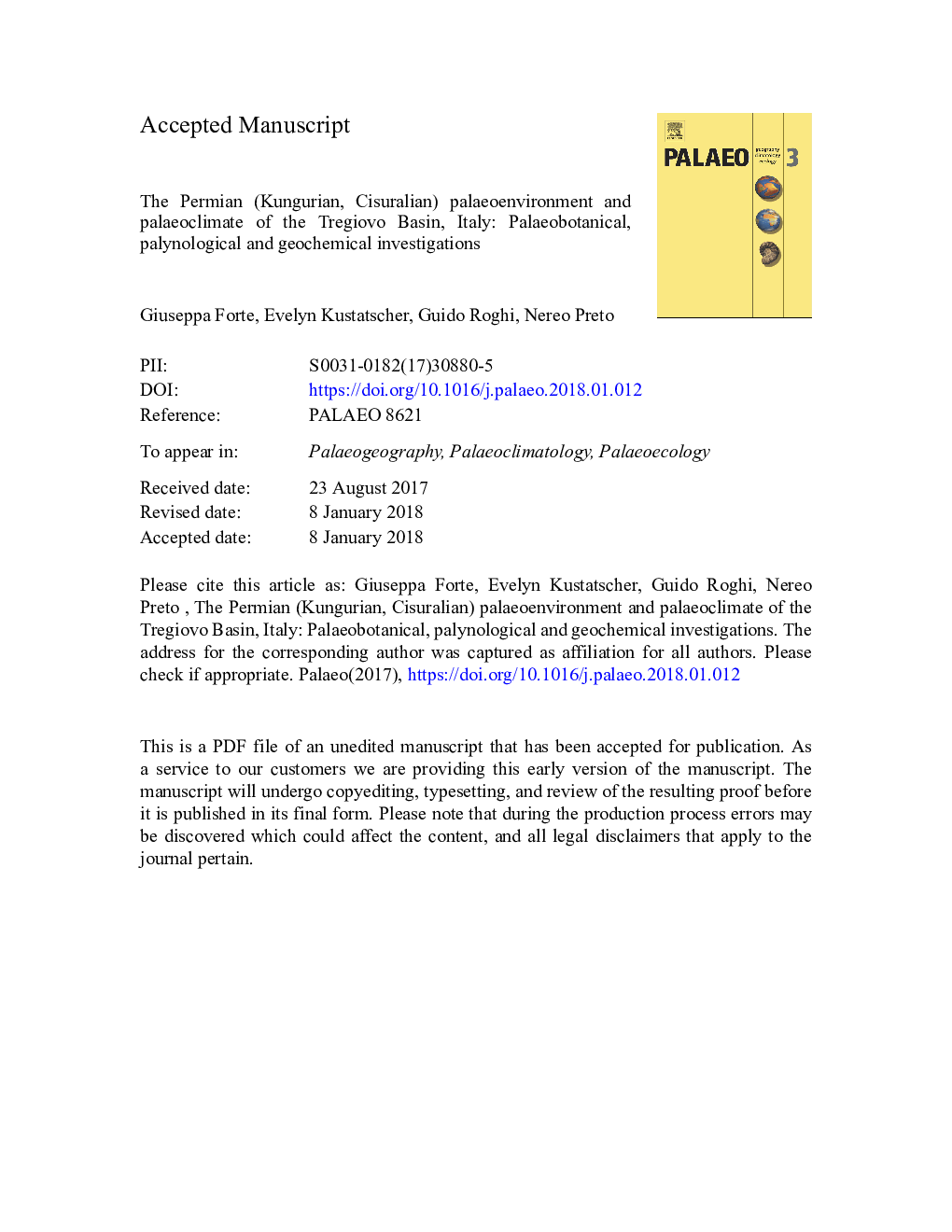| Article ID | Journal | Published Year | Pages | File Type |
|---|---|---|---|---|
| 8868332 | Palaeogeography, Palaeoclimatology, Palaeoecology | 2018 | 68 Pages |
Abstract
A transition from widespread humid to more drought tolerant floras characterized tropical terrestrial ecosystems during the Permian (Cisuralian). Tregiovo (Southern Alps, N-Italy) is one of the very few well dated Kungurian (late Cisuralian) plant localities in Euramerica. It was located in eastern palaeoequatorial Pangea. Two units bearing fossil plant assemblages occur in finely laminated sediments deposited in a playa-lake environment. In this paper, the sedimentology of the Tregiovo Basin is reviewed, and new palaeobotanical, palynological and stable isotopic data are presented, in order to reconstruct the palaeoclimatic and palaeoenvironmental conditions of the Kungurian in the Southern Alps. Both fossil plant assemblages are dominated by conifers (Hermitia, Feysia, Quadrocladus, Dolomitia), together with sphenophytes (Annularia), ginkgophytes (Sphenobaiera), pteridosperms (Peltaspermum), taeniopterids and sphenopterids. These taxa, which occur with different abundances in the two plant assemblages, both indicate semi-arid conditions. Associated palynoflora, dominated by bisaccate pollen, and extremely rare spore occurrences, is consistent with the xerophytic character of the macroflora, and suggests that the fossil plant record was not affected by collection or preservation bias. Stable isotopic analyses of two stratigraphic sections reveal an upward trend of increasingly negative δ13Corg (VPDB), which may correlate with roughly coeval records from marine and continental successions such as in North China and South Africa. This isotopic shift may be attributed to a global perturbation of atmospheric δ13C, although the influence of local environmental factors cannot be excluded.
Related Topics
Physical Sciences and Engineering
Earth and Planetary Sciences
Earth-Surface Processes
Authors
Giuseppa Forte, Evelyn Kustatscher, Guido Roghi, Nereo Preto,
